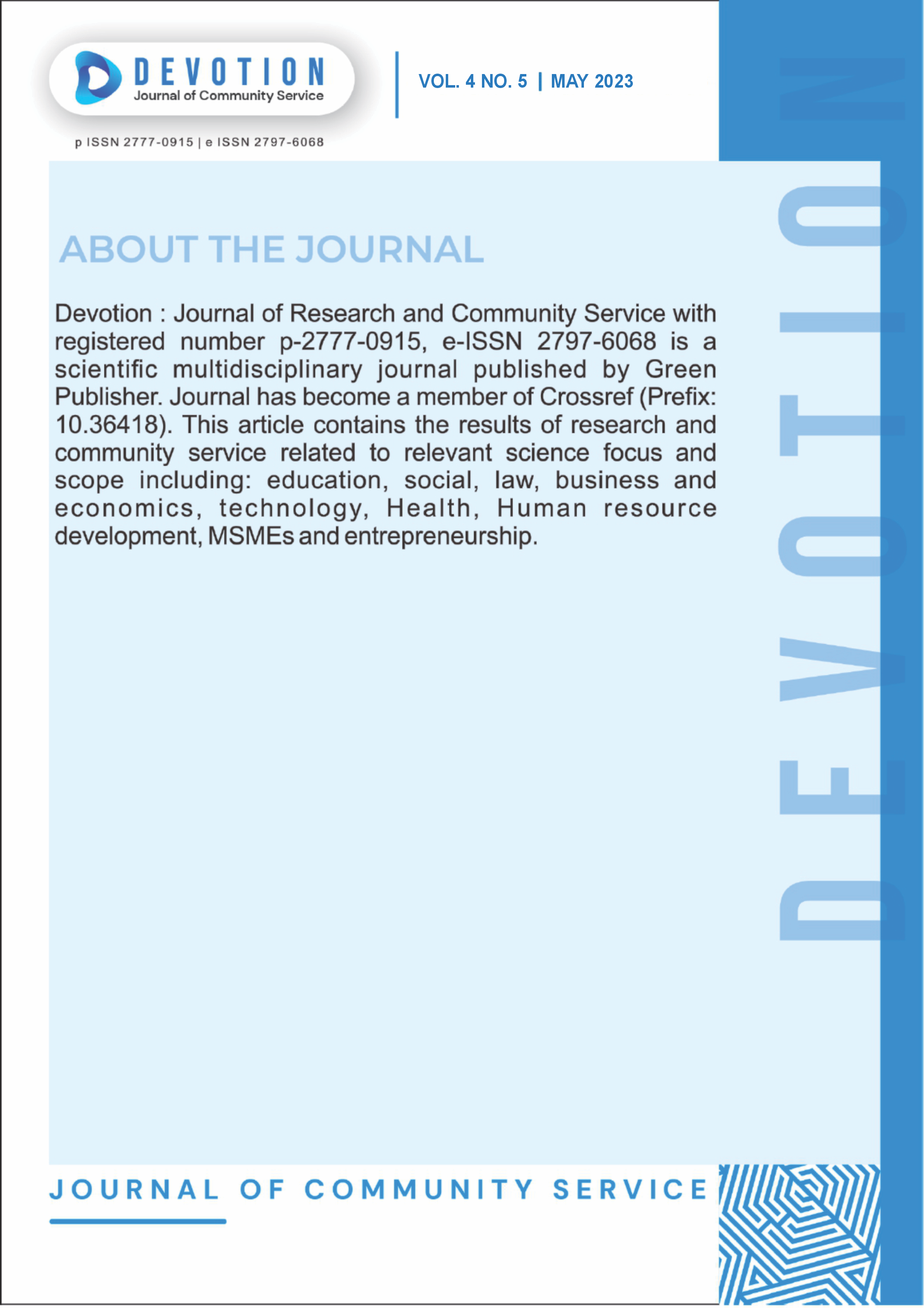Community Satisfaction Analysis Based on Physical Quality of Green Open Space in Takengon (Case Study: Taman Aman Dimot)
DOI:
https://doi.org/10.59188/devotion.v4i5.470Keywords:
community; community satisfaction; green open space; urban areaAbstract
The increasing number of human populations causes the density of development that continues to occur. This is done to ensure that the development carried out no longer damages’ nature. One of them is by creating Green Open Space (RTH) or Green Open Space, especially in big cities. In Takengon City, the government wants to make Takengon City a child-friendly city, a healthy city, and a livable city. The purpose of this study is to analyze the level of public satisfaction with Green Open Space in Taman Aman Dimot. The type of research used in this study is descriptive research with quantitative and qualitative approaches. The results of the study, among others, are; (1) Park sociability aims to analyze supporting facilities that support opportunities to socialize with two indicators, namely opportunities to socialize and the environment, (2) comfort is one of the factors for city parks to measure park visitor satisfaction, (3) park visitors, such as the condition of facilities and the number of facilities and cleanliness of the park are the reasons for visitors to be less comfortable, (4) maintenance of park cleanliness is key in the management process park, (5) criteria that become the next category, namely Park Infrastructure, facilities contained in the park such as seating facilities, sports equipment, the condition of facilities and other supporting facilities are very poor, and (6) the criteria for a comfortable park according to visitors in general such as the cleanliness of the park, the amount of vegetation (trees) and complete and well-maintained facilities are the opinions of visitors to give the impression of comfort.
Published
Issue
Section
License
Copyright (c) 2023 Fakhry Perdana Koara, Amy Marisa, Achmad Delianur Nasution

This work is licensed under a Creative Commons Attribution-ShareAlike 4.0 International License.
Authors who publish with this journal agree to the following terms:
- Authors retain copyright and grant the journal right of first publication with the work simultaneously licensed under a Creative Commons Attribution-ShareAlike 4.0 International. that allows others to share the work with an acknowledgement of the work's authorship and initial publication in this journal.
- Authors are able to enter into separate, additional contractual arrangements for the non-exclusive distribution of the journal's published version of the work (e.g., post it to an institutional repository or publish it in a book), with an acknowledgement of its initial publication in this journal.
- Authors are permitted and encouraged to post their work online (e.g., in institutional repositories or on their website) prior to and during the submission process, as it can lead to productive exchanges, as well as earlier and greater citation of published work.













